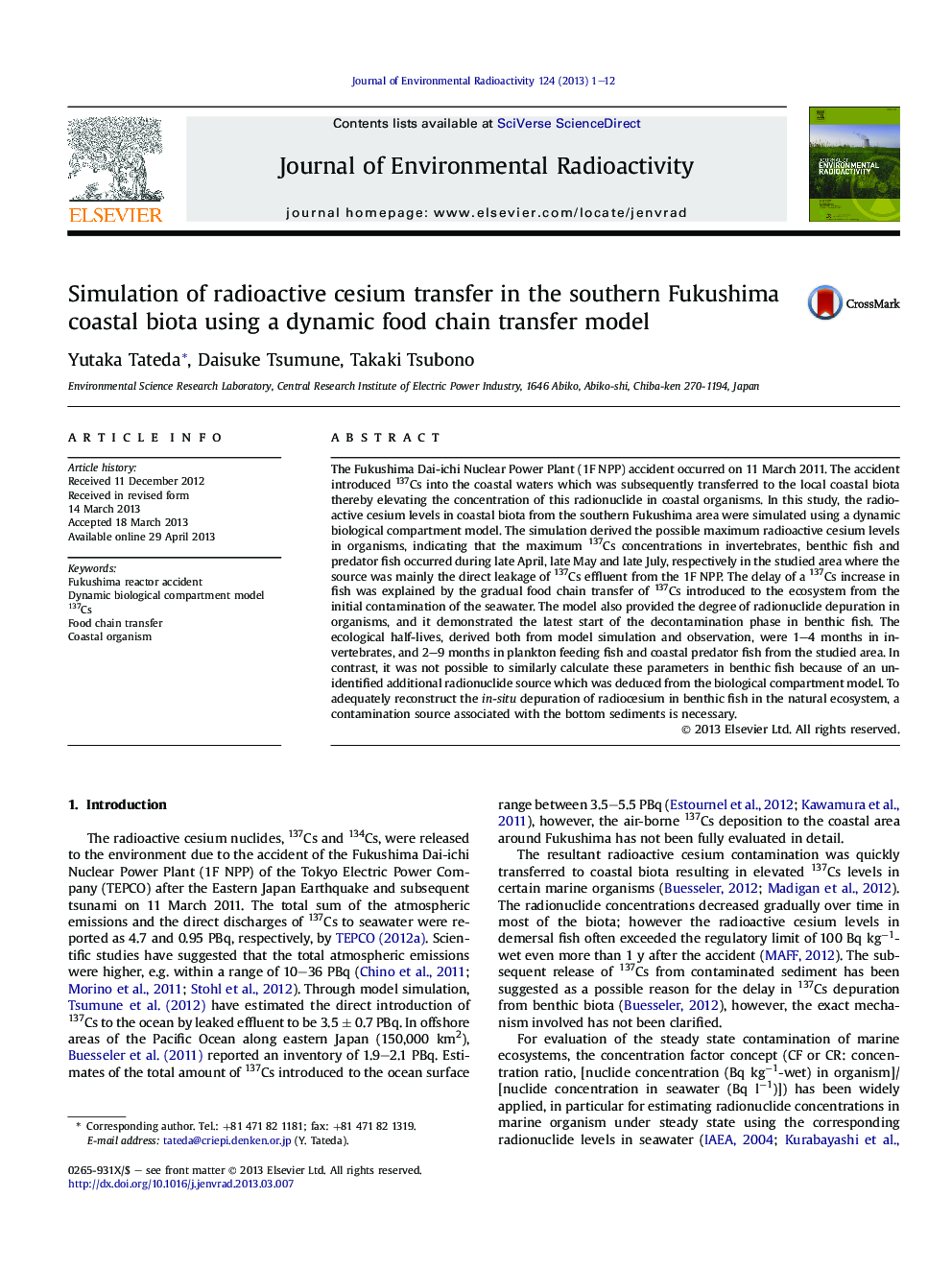| کد مقاله | کد نشریه | سال انتشار | مقاله انگلیسی | نسخه تمام متن |
|---|---|---|---|---|
| 1738168 | 1521609 | 2013 | 12 صفحه PDF | دانلود رایگان |

• Cs-137 in the southern Fukushima coastal biota were simulated using a dynamic biological compartment model.
• Simulation derived contamination phase of marine biota was completed until late April to July 2011.
• The delay of Cs-137 concentration increase in fish was explained by the gradual food chain transfer.
• The ecological half-lives during model derived depuration period were 1–9 months in coastal biota.
• Additional source is necessary to reconstruct observed delay of Cs-137 depuration in benthic fish.
The Fukushima Dai-ichi Nuclear Power Plant (1F NPP) accident occurred on 11 March 2011. The accident introduced 137Cs into the coastal waters which was subsequently transferred to the local coastal biota thereby elevating the concentration of this radionuclide in coastal organisms. In this study, the radioactive cesium levels in coastal biota from the southern Fukushima area were simulated using a dynamic biological compartment model. The simulation derived the possible maximum radioactive cesium levels in organisms, indicating that the maximum 137Cs concentrations in invertebrates, benthic fish and predator fish occurred during late April, late May and late July, respectively in the studied area where the source was mainly the direct leakage of 137Cs effluent from the 1F NPP. The delay of a 137Cs increase in fish was explained by the gradual food chain transfer of 137Cs introduced to the ecosystem from the initial contamination of the seawater. The model also provided the degree of radionuclide depuration in organisms, and it demonstrated the latest start of the decontamination phase in benthic fish. The ecological half-lives, derived both from model simulation and observation, were 1–4 months in invertebrates, and 2–9 months in plankton feeding fish and coastal predator fish from the studied area. In contrast, it was not possible to similarly calculate these parameters in benthic fish because of an unidentified additional radionuclide source which was deduced from the biological compartment model. To adequately reconstruct the in-situ depuration of radiocesium in benthic fish in the natural ecosystem, a contamination source associated with the bottom sediments is necessary.
Journal: Journal of Environmental Radioactivity - Volume 124, October 2013, Pages 1–12